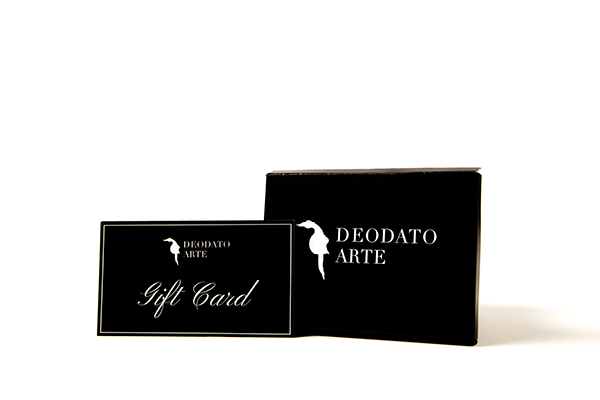
Do you really know the Street Artist Invader who has hidden himself with huge pixels in more than 50 cities around the world? Here are five trivia facts about Invader that will shed light on the mysterious artist who has produced more than 4,000 mosaics!
Space Invader and Mr. Brainwash - the family of Street Artists.
Few people know that Invader's work has always been admired from his earliest beginnings, starting with his family. In fact, Mr. Brainwash is a direct relative of the street artist: the two artists are cousins!
The relationship between the famous Pop Street Artist Mr. Brainwash and the invasive street artist has been out in the open since the dawn of the invasions, which took place in the early 1990s on the streets of Paris. Subsequently, the close kinship was officially confirmed with the release of the documentary Exit Through the Gift Shop conceived and filmed by Thierry Guetta (aka Mr. Brainwash) in 2010.
Truth be told, Mr. Brainwash has always been obsessed with capturing on film everything surrounding his cousin Invader and his art practice. Thus, Invader's nocturnal "invasion" adventures have already been filmed during family occasions (such as family vacations in France).
Origin of the Name: Space Invader's Aliens.
There are many who believe that the Street Artist Invader takes his artist name from his own artistic practice of "invasion" interventions in the world's cities.
However, this belief is false! Invader, in fact, takes its name from the well-known 1978 arcade video game Space Invader. A stationary screen in which the player-governed cannon had the objective of eliminating all aliens trying to occupy planet Earth by moving only horizontally.
The choice of the stage name, however, is not an end in itself. In fact, the famous 1970s-80s video game Invader also takes inspiration for his art practice. In fact, Invader's chosen subjects refer again and again to the aesthetics of the early computer and video games of those years. Early video games had very low image quality, making it possible to see the pixels of which they were composed.
Thus, Invader repurposes characters with the same visual logic: pixels become the protagonists of the two city invasions, harking back to the past we are nostalgic for!
Unidentified Free Artists: UFA
Invader calls himself an Unidentified Free Artist, that is, an artist who prefers not to be recognized in order to maintain his anonymity, and consequently, his freedom of expression.
The artistic ethical choice made by Invader is reminiscent of that already undertaken by one of the world's most famous Street Artists, Banksy. Thanks to his anonymity, Invader was able to start the Space Invaders project in 1998, the main intent of which was to liberate art from the institutionalization, perpetuated in museums, that alienated street art and any other unconventional art form.
Using this classification, Invader also wants to recall the acronym UFO, or Unidentified Flying Objects, creating a play on words with his favourite subjects: the aliens from the well-known Japanese video game, the protagonists of his mosaic work.
Invader in Space: the Project with ESA.
Not everyone knows that the tiny mosaics with which Street Artist Invader recreates the pixels of the well-known video game Space Invaders have reached far beyond Earth's borders.
Supported also by Italian astronaut Samantha Cristoforetti, the invader in more than 60 cities around the world managed in 2012 to make his Space Invaders project a reality: to conquer space! In fact, the artist sent one of her works into the stratosphere, thanks to a balloon. Several Invaders subjects were spotted at the ESA Space Stations in Cologne, Germany and Belgium.
The Invaded Cities: Paris, Rome and Ravenna
Paris
On top of the Eiffel Tower or near the Centre Pompidou, the mosaics began in Paris itself, one of the iconic cities of modern and contemporary art. Invader's first mosaic appeared in 1996: from then on, the artist gave life to his Space Invaders project, that is, to fill the public space of different cities around the world with his art made of huge pixelated tiles.
Making quick interventions and mainly at night, over time Invader began to search for suitable places for his works, imagining what kind of mosaic would be most suitable in a certain place. Thus it became part of the space and architecture of cities, invading more and more cities over the years.
Rome
The artist invaded the city of Rome in 2010, leaving about seventy works scattered around the Eternal City. Starting in the Trastevere area, Invader covered much of the city, reaching as far as the Roma Termini area. In order to be able to closely follow the artist's various and numerous invasions, Invader created a limited edition InvadeRoma map of 1,000 copies, which also features pen interventions by the artist.
However, some street mosaics have disappeared: in fact, those on Via Giolitti, Via Mameli and Piazza Vittorio have been removed. Being sometimes placed on buildings without permission or stolen for the black market, many of the Invader's prints disappear over time. Yet his intention Yet his intention remains the same: to be able to let everyone enjoy his art for free!
Ravenna
Invader, the Street Artist of Mosaics arrives in both 2014 and 2015 in the queen city of mosaics: Ravenna. Invited for the first time by the Planet Mars Association, Invader created a 20-square-meter mosaic depicting Spock, the icon of the sci-fi television series Star Trek.
Invader seems to have been very impressed with the city, which has inspired other small installations of his work on streets in and around downtown. In total, the artist left 40 works in his two "waves," and, as stated on his website.
Unfortunately, as happened in Rome, some of his works are no longer visible. Several were removed because they lacked municipal permits, as in the case of the mosaic depicting Justinian and Theodora, created in Via Galla Placidia and later removed.
Invader city invader: about Deodato Arte
Invader has conquered more than 60 cities around the world, making mosaics of aliens invading Earth. His aliens made of pixels are known all over the world.











 Register
Register Wishlist
Wishlist Contact Us
Contact Us








